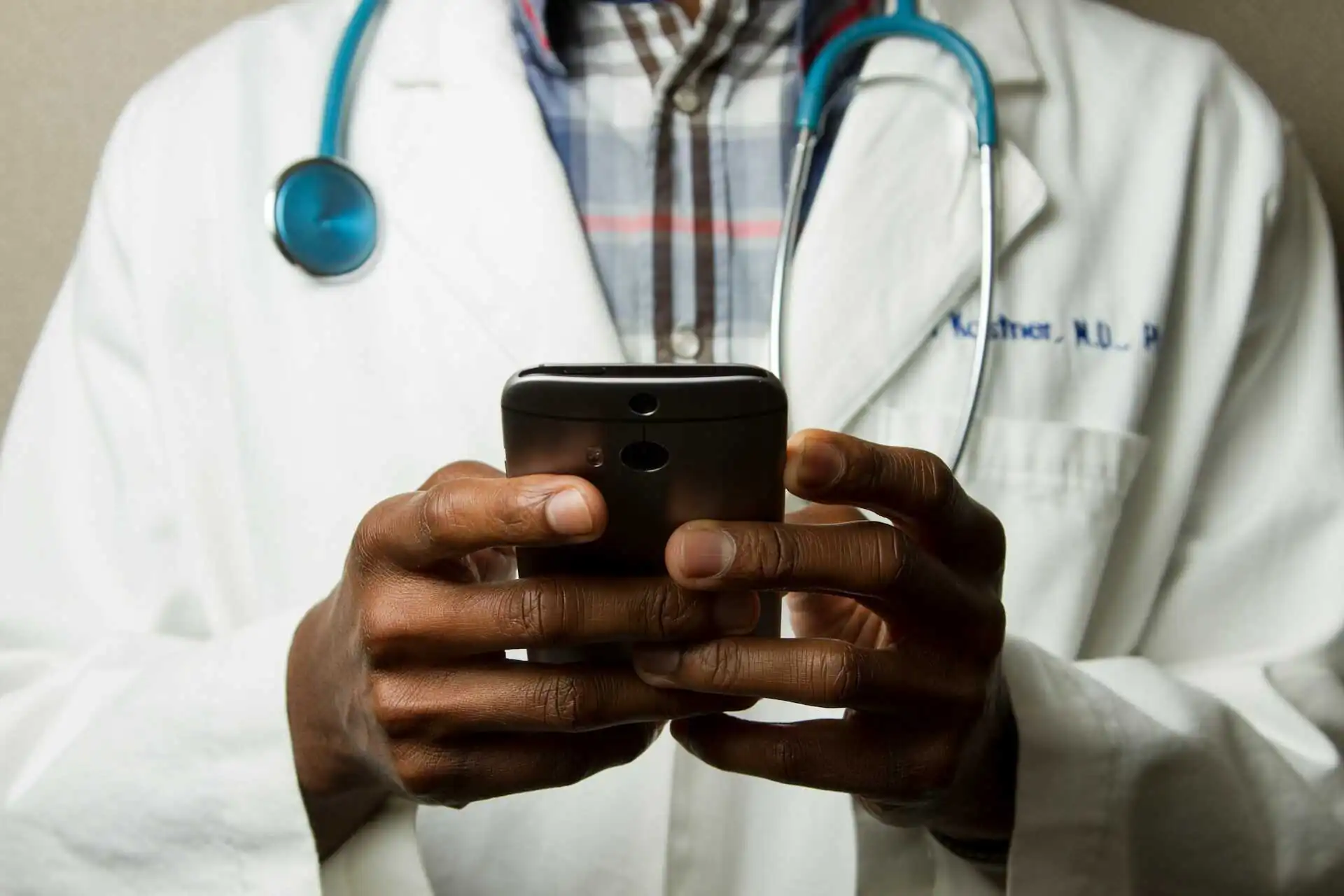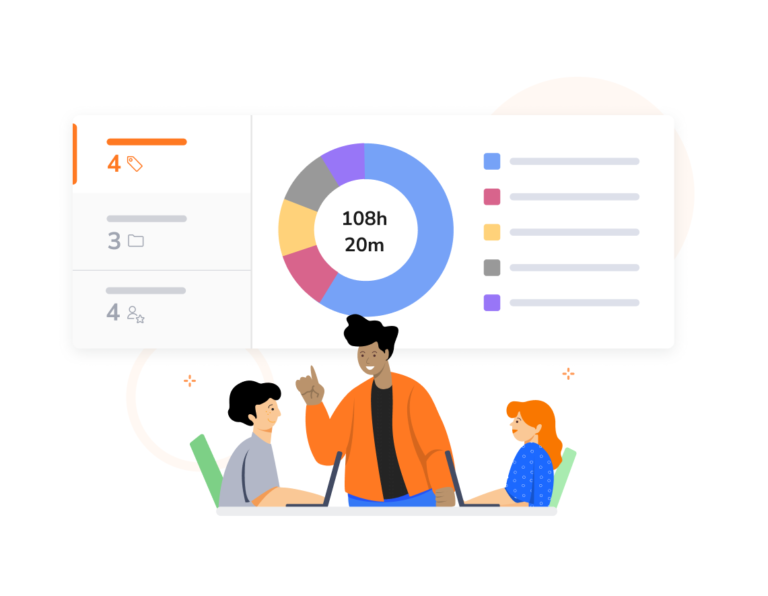Time tracking is a vital process for any organization, especially those in the healthcare industry. The US healthcare system faces many challenges, such as rising costs, staff shortages, regulatory compliance, and patient satisfaction. To solve these problems, the people who work in health care need to use good ways of keeping track of time that can help them make their work more efficient and patient-focused.
This article will explore seven essential time tracking best practices designed for the US healthcare industry. These practices will help healthcare organizations effectively monitor staff productivity, minimize errors in payroll and patient billing, foster collaboration among teams, enhance staff satisfaction and motivation, improve patient care and service, and ultimately, achieve organizational goals.
Time Tracking Best Practices in US Healthcare
- Tip 1. Know the Benefits of Healthcare Time Tracking
- Tip 2. Select the Right Time Tracking Software
- Tip 3. Establish Clear Time Tracking Policies and Procedures
- Tip 4. Streamline Time Tracking Processes
- Tip 5. Comply with Labor Laws and Regulations
- Tip 6. Use Data Analytics for Insights
- Tip 7. Embrace Continuous Improvement and Learning
Final Thoughts: Optimizing US Healthcare with Time Tracking Best Practices
Tip 1. Know the Benefits of Healthcare Time Tracking
Time tracking is not only a necessary process for healthcare organizations in the US, but also a valuable opportunity to improve their performance and quality of care. The US healthcare system is a complex mix of public and private programs, with around one-tenth of the population uninsured. It also faces many challenges, such as rising costs, staff shortages, regulatory compliance, and patient satisfaction. By improving their time tracking practices, healthcare organizations in the US can reap many benefits that positively affect their staff and patients. Some of these benefits are:
- Efficient resource allocation: Time tracking helps healthcare organizations in the US to plan and manage their resources effectively, such as staff, equipment, and supplies. This ensures they have enough resources to meet the demand and avoid shortages or surpluses.
- Boosted staff productivity: Time tracking enables healthcare organizations in the US to measure and improve the productivity and performance of their staff. This helps them identify and address issues or bottlenecks affecting their work, such as workload, skills, training, or motivation.
- Reduced patient waiting times: Time tracking allows healthcare organizations in the US to reduce the waiting times for their patients, which can be a major source of frustration and dissatisfaction. By tracking the time spent on each task and patient, they can optimize their workflows and schedules, and ensure that patients receive timely and appropriate care.
- Enhanced patient experience: Time tracking leads to a better patient experience, which is the ultimate goal of any healthcare organization in the US. By improving their efficiency, productivity, and quality of care, they can increase patient satisfaction, loyalty, and retention.
By acknowledging and leveraging the benefits of improved time tracking, healthcare organizations in the US can create a positive change and improve outcomes within their facilities.

Photo by National Cancer Institute on Unsplash
Tip 2. Select the Right Time Tracking Software
Time tracking software is a vital tool for improving efficiency in the healthcare industry. However, not all software is created equal. Healthcare organizations have unique needs and challenges that require specific features and functions from their time tracking software. Therefore, they need to choose the software that best suits their goals and preferences. Some of the key factors to consider when choosing healthcare time tracking software are:
- User-friendly interface: Healthcare time tracking software should be easy to use and navigate for staff and managers. It should have a clear and intuitive design that minimizes errors and confusion. It should also have features that simplify and automate tasks, such as clocking in and out, requesting time off, or approving timesheets.
- Customizable reporting: Time tracking software should allow healthcare organizations to generate and access various reports that provide insights into their time tracking data. These reports should be customizable to meet each organization’s specific needs and preferences, such as filtering by department, project, or employee. They should also be easy to export and share with relevant stakeholders.
- Seamless integration: Time tracking software should be compatible and integrable with other systems and software that healthcare organizations use, such as payroll, billing, scheduling, or electronic health records. This ensures that data is synchronized and consistent across different platforms and eliminates the need for manual data entry or duplication.
- Robust data security: Healthcare time tracking software should have strong data security measures that protect the privacy and confidentiality of healthcare organizations and their patients. It should comply with relevant laws and regulations, such as the Health Insurance Portability and Accountability Act (HIPAA), that govern the handling of sensitive health information. It should also have features that prevent unauthorized access or tampering, such as encryption, authentication, or backup.
Tip 3. Establish Clear Time Tracking Policies and Procedures
Time tracking in healthcare requires clear policies and procedures that comply with the laws and regulations that apply to the US healthcare system. These policies and procedures should cover various aspects of time tracking, such as:
- Documenting time entries: Staff should record their time accurately and honestly, using the approved time tracking software or system. They should include details such as the date, start and end time, project or task, and any notes or comments. They should also submit their timesheets on time and review them for errors or discrepancies. They should comply with the federal Health Insurance Portability and Accountability Act of 1996 (HIPAA), which protects the privacy and security of health information.
- Break policies: Staff need to follow the rules for taking breaks that match their job and schedule. This includes lunch breaks, rest breaks, or paid or unpaid breaks. They must clock out and in when they take breaks unless told differently. They also need to follow the time and number of breaks their employer or contract allows. They need to follow the federal law called the Fair Labor Standards Act (FLSA), which sets the rules for minimum wage, overtime pay, recordkeeping, and youth employment.
- Overtime tracking: Staff need to keep track of their overtime hours, if they have any, using the healthcare time tracking software or system. They need to tell their manager or supervisor about their overtime hours for approval and payment. They also need to follow the FLSA, which says that employers have to pay employees at least one and one-half times their normal pay for all hours worked over 40 in a week.
- Time-off requests: Staff need to ask for time off ahead of time using the time tracking software or system. They must say why and how long they will be away, such as vacation, sick, personal, or family leave. They also need to follow the approval process and let their manager or supervisor know if anything changes or if they cancel. They need to follow the federal law called the Family and Medical Leave Act (FMLA), which gives eligible employees the right to take unpaid, job-protected leave for certain family and medical reasons.
Tip 4. Streamline Time Tracking Processes
Healthcare organizations in the US need to have simple and fast time tracking processes. This can help them reduce the work and stress that staff and managers must handle. One way to do this is to use geofencing and facial recognition systems. Geofencing is a technology that can track the location of staff using GPS or radio signals to ensure they are in the correct location when clocking in. Facial recognition systems can identify staff by their faces using cameras and software. These technologies can make time tracking easier and quicker by streamlining the process of clocking in for healthcare organizations.
Streamlined processes can also have other benefits for healthcare organizations in the US. They can help them avoid mistakes, save time, and make staff more productive. They can also allow staff to focus more on patient care, the most important thing in healthcare.
Tip 5. Comply with Labor Laws and Regulations
Healthcare organizations in the US have to follow labor laws, such as the Fair Labor Standards Act (FLSA). This federal law sets the minimum wage, overtime pay, recordkeeping, and youth employment. Healthcare organizations have to keep accurate records of their staff’s time and pay them correctly for overtime hours. They also have to keep up with changes in labor laws and regulations. This is important to avoid problems and keep a fair and ethical work environment.
Keeping track of time and labor laws can be stressful for hospital administrators. They have to deal with a lot of paperwork and data. One way to make this easier is to use automated time tracking processes. These processes use technology to track and record staff’s time without manual input. For example, software or devices can clock staff in and out automatically. Automated processes can reduce the paperwork burden and help hospital administrators focus on compliance.
Tip 6. Use Data Analytics for Insights
Data analytics is a key tool for improving time tracking practices in the healthcare industry. Data analytics collects, processes, and analyzes data to generate useful information. By using data analytics, healthcare organizations can examine their time tracking data and discover important patterns and trends. Data-driven insights can help healthcare organizations understand how they use their resources, where they can improve, and what actions they can take. This data can enable healthcare organizations to:
- Optimize staffing: Healthcare organizations can plan and manage their staff effectively. They can use data to determine the optimal number and mix of staff for each shift, project, or department. They can also use data to monitor staff productivity, performance, and satisfaction.
- Streamline workflows: They can use data to identify and eliminate bottlenecks, inefficiencies, and errors. They can also use data to optimize their schedules, tasks, and priorities.
- Enhance patient care outcomes: Healthcare organizations can use data to measure and improve their care quality, safety, and effectiveness. They can also use data to personalize their care and tailor it to each patient’s needs and preferences.
By using data analytics, healthcare organizations can improve their time tracking practices and achieve improved overall performance.
Tip 7. Embrace Continuous Improvement and Learning
Tracking time is an important aspect of many US Healthcare continuous improvement strategies, as it helps to measure the performance of processes, identify sources of variation and waste, and monitor the effects of changes. Some ways to foster continuous improvement are:
- Regular evaluations: Healthcare organizations should use data and metrics to measure their progress and outcomes. They should also compare their performance with industry standards and best practices.
- Feedback loops: Soliciting feedback on their time tracking practices is important to ensure the processes are working as intended. They should involve their staff, managers, patients, and other stakeholders in the feedback process. They should also use feedback to identify strengths, weaknesses, opportunities, and challenges.
- Open communication channels: Healthcare organizations should communicate their goals, expectations, and results clearly and consistently. They should also encourage dialogue, collaboration, and innovation among their staff and departments.

Photo by Marcus Aurelius on Pexels
Final Thoughts: Optimizing US Healthcare with Time Tracking Best Practices
Time tracking for healthcare is vital for any organization that wants to optimize its operations and enhance its performance. Improving time tracking practices is crucial for the US healthcare sector, which faces many challenges and opportunities to deliver quality patient care. Effective time tracking can help healthcare organizations reduce costs, increase productivity, improve quality, ensure compliance, and foster a culture of continuous improvement.
However, achieving these benefits requires more than just tracking time. It also requires selecting the right software, establishing clear policies, streamlining processes, leveraging data analytics, and embracing continuous improvement. By following these steps, healthcare organizations can create an environment of efficiency and excellence, where improved time tracking drives better outcomes for healthcare staff and patients.




